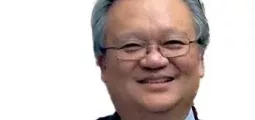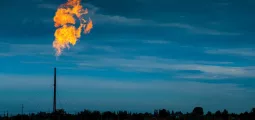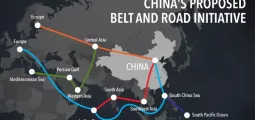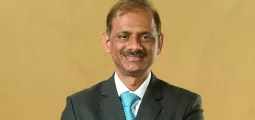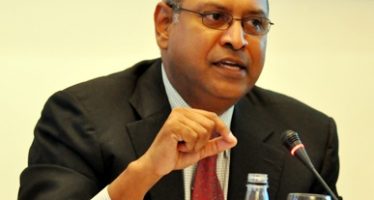World Bank Group: Sovereign Wealth Funds Investing at Home – Opportunity Fraught with Risk
By Håvard Halland, Alan Gelb, and Silvana Tordo
 Following the recent discoveries of large oil and gas deposits in East Africa, a number of countries in the region are in the process of establishing, or are discussing the creation of, sovereign wealth funds (SWFs) as a means to stabilise the effect of volatile currency inflows and to save for future generations.
Following the recent discoveries of large oil and gas deposits in East Africa, a number of countries in the region are in the process of establishing, or are discussing the creation of, sovereign wealth funds (SWFs) as a means to stabilise the effect of volatile currency inflows and to save for future generations.
Additionally, like several other SWFs established over the last decade, some East African governments are considering a role for the planned funds in economic development, as strategic investors in the national economy. The use of SWFs as a tool for strategic domestic investments opens up a range of new possibilities for deepening undercapitalised domestic financial markets and crowding in private capital to infrastructure in priority sectors such as power and transport. However, the approach also carries significant risk, and previous experience suggests great caution is warranted. What are the most important risks, how can these be mitigated, and what type of domestic investments should a SWF undertake, if at all?
New Oil and Mineral Producers Are Setting Up Funds
Sovereign wealth funds hold about $6.5 trillion in assets. Responding to the funds’ objectives to sterilise large export windfalls, save for future generations, and balance risks and returns, their holdings have traditionally focused on external assets – primarily securities traded in major markets but also real estate and other investments. Some SWFs with long-term investment horizons have invested in infrastructure, but these investments have mainly been in other countries, in high-return existing infrastructure or low-risk new projects located in middle and high-income economies. Until recently, domestic greenfield infrastructure investment was largely uncharted territory.
“Sovereign wealth funds hold about $6.5 trillion in assets.”
A number of the SWFs established since the turn of the millennium have been set up to undertake strategic domestic investment, including several of the Gulf funds, Kazakhstan’s Samruk-Kazyna and Malaysia’s Kazanah. During the last three years, Nigeria and Angola have established funds with a domestic investment function. More are in the making or are being discussed, including in Kenya, Morocco, Myanmar, Mongolia, Tanzania, Uganda, Mozambique, and Sierra Leone. Most of these funds will be capitalised by revenue from oil or mineral exports.
Why Invest at Home?
The interest in SWFs as a tool for strategic domestic investment is driven by four distinct factors. First, although several high-income countries have strategic investment funds, the countries currently contemplating strategic investment functions for their planned funds tend to be low and middle-income with a large infrastructure deficit and looking for ways to increase infrastructure investment.
Second, amongst governments and international financial institutions, there has been a loosening in the interpretation of the permanent income hypothesis, which holds that countries should save enough of their revenues from non-renewable resources abroad to maintain a permanent income flow into the indefinite future. If returns are higher at home than abroad, or if future generations can be expected to be wealthier than the current one, it might make sense to save less and invest more at home now.
Third, the global financial crisis and shrinking aid flows have led to decreased availability of long-term finance for developing countries. These have been looking to supplement foreign capital with their own.
Fourth, public investment in low-income countries frequently poses significant management and governance challenges, including low capacity, weak governance and regulation, and lack of coordination among public entities.
Given this type of shortcomings, many countries have not been able to offset the depletion of their natural resources by investment in produced capital, as is required to maintain wealth and sustain growth (Hartwick Rule). In this type of setting, some governments may see a fund as a means to improve the quality of public spending, and crowd in private investors to strengthen investment discipline.
What Are the Risks?
Several well-performing SWFs hold a significant share of domestic assets in their portfolios. Examples are Singapore’s Temasek, with approximately 25 percent, and the New Zealand Superannuation Fund with about 17 percent. Public pension funds tend to be even more concentrated in their home country or region, frequently with domestic assets dominating the portfolio. These funds invest at home because it is the profitable thing to do, and their superior knowledge of home markets allows for high portfolio concentration in domestic assets.
However, unlike Temasek, New Zealand’s fund, or public pension funds, most of the recent or planned SWFs are so-called resource funds, and from a risk perspective it is useful to consider resource funds separately, as a subclass of SWFs.
Two aspects set resource funds apart from other SWFs, and from public pension funds. Firstly, since resource funds are capitalised by proceeds from oil, gas, and mineral exports, the inflow of large amounts of foreign currency can lead to destabilisation and appreciation of the exchange rate, and inflation of asset bubbles.
Secondly, the political economy of resource funds differs from that of other SWFs, and from development banks, since resource funds do not need to raise capital in financial markets, and do not rely on pension contributions, fiscal surpluses, or taxes that affect a significant share of the electorate. In addition, the groups bearing the costs of extraction tend to be underrepresented in the political and economic decision making process. The lack of a strong constituency, such as pension contributors or lenders, combined with the conflict of interests arising from the government’s combined role as owner of the fund and promoter of its investments, make resource funds highly vulnerable to political interference.
Political meddling can in turn put the wealth objectives of the funds, as well as the quality of domestic investments, at risk. Funds may be captured by political factions and used to avoid parliamentary scrutiny of spending on politically motivated projects, and could undermine central bank ability to achieve monetary policy goals by capping foreign exchange reserves and channelling excess currency inflows to a resource fund not controlled by the central bank.
The Complexity of Multiple Objectives
Additional risk is generated if the fund’s domestic investment mandate is defined to include development objectives. An infrastructure project may provide economic externalities, such as the stimulation of private investments and jobs, which are not fully captured by its financial return. Economic externalities, however, are notoriously hard to measure, and no generally accepted method currently exists for trading off financial returns against the wider economic and social returns represented by positive externalities.
If fund management can no longer be assessed on the basis of the fund’s financial performance, assessment becomes very difficult. This increases the fund’s vulnerability to political interference. One way to address this problem would be to allow funds to undertake domestic investments only on a strictly commercial basis, as is the case of, among others, Temasek, the New Zealand fund, and most public pension funds.
However, many resource-rich low-income countries have underdeveloped equity markets, and the risk related to investment in greenfield infrastructure is frequently too high for these investments to be initially attractive to commercial investors.
All options face trade-offs. According to the traditional approach, oil and mineral revenues that are not saved abroad or held for short-term stabilisation purposes should be invested through the government budget, where direct parliamentary oversight can ensure accountability, macroeconomic coherence, and overall consistency of the public investment programme. This approach helps to stabilise spending in the face of uncertain resource rents and to maintain budget discipline.
On the other hand, low capacity, weak governance, and the lack of coordination among public entities could severely undermine the efficiency and effectiveness of a public investment programme. Also, a large SWF is vulnerable to being raided by future, less prudent, governments. If the fund has, or engages, the necessary expertise it could act as a specialised investor, helping to crowd in private investors through well-designed PPPs.
Checks and Balances
The risks of mandating or permitting resource funds to undertake domestic investment can hardly be eliminated. But can they be mitigated and managed? Clearly, to avoid contributing to asset bubbles, macroeconomic volatility and exchange rate appreciation, there needs to be coordination with overall fiscal and monetary policy, especially if the fund is large relative to the size of the national economy.
There should also be a clear separation between the type of investments that can be undertaken by the fund, and investments that should go through the government budget. In that regard, allowing the fund to undertake only investments that can be expected to yield a commercial or quasi-commercial return can strengthen the integrity and discipline of the investment process. Investments that do not fulfil this condition – such as schools, local roads, and rural health clinics – should go through the budget.
Allocations to domestic investment should not be in the form of a mandated share but determined on the basis of competition with the returns on foreign assets. When domestic returns are low or there are indications of asset bubbles, investment should be channelled abroad.
The meaning of quasi-commercial is important. The quasi-commercial space can be defined as a specific and limited markdown from the benchmark risk-adjusted interest rate on foreign assets, or a differential in the length of the investment horizon with respect to the benchmark. If the investment is expected to yield significant positive economic externalities, then a limited and well-defined markdown from the benchmark rate may be considered.
Investing with private investors, pooling with other SWFs, and co-financing with regional development banks could help funds to reduce risk, bring in additional expertise, and enhance the credibility of investment decisions. As an example, the Nigeria Infrastructure Fund, the domestic subsidiary of the Nigeria Sovereign Investment Authority, has signed cooperation agreements with the Africa Finance Corporation, the International Finance Corporation (IFC) and, for power sector investments, with General Electric. Limiting investments to minority shares would serve to reduce risks of politically motivated allocations.
Finally, funds need strong corporate governance, professional staffing, transparent reporting, and independent audit. There is a large body of knowledge on effective corporate governance – including the Santiago Principles, the Revised Guidelines for Foreign Exchange Reserves, and general principles of corporate governance – including for state owned enterprises, published by the OECD.
Independent nominating committees, as well as clear skill requirements, can facilitate the independence of boards. Ownership and supervisory roles should be clearly separated. To operate as an expert investor, the fund needs to be staffed with qualified professionals, just like any investor in the financial sector. Strategic and greenfield investments require special expertise. Sector-specific expertise may be needed as well.
Consistent with good practice, SWFs investing domestically should issue accessible public reports covering activities, assets, and returns. Where part of the portfolio is invested in “strategic” projects or projects with returns expected to be below market, these should be reported on separately. Internal audit should report directly to the board, and external audit be undertaken by an internationally reputable firm that is independent of the owner.
Challenges Ahead
The guidelines outlined above are generic, and will need to be expanded and supplemented according to country context. For example, the Nigeria Infrastructure Fund (NIF) has recently announced plans to set up a credit enhancement facility that will leverage its own investments with capital from external investors. Risk mitigation for this type of structure will depend on reinsurance and liability arrangements. If successful, the facility will represent a milestone in the definition of new potential roles for SWFs.
To be able to establish operations of such complexity, Nigeria has been able to draw on an extensive diaspora that includes highly experienced international bankers – ex-Wall Street, City of London, and elsewhere. In-house investment management, or direct investing, permits SWFs to avoid paying fees to private-equity firms, which typically charge 2% on assets and take 20% of profit.
However, smaller countries with less available capacity may to a large extent need to outsource complex investment functions. The incentive structures of outsourcing arrangements – to minimize moral hazard, as well as provide checks and balances – will be vital to these funds’ success. In the end, the fundamental question might not be if countries choose or not to use SWFs for domestic investment, but how such investments are implemented, and to which extent these decisions reflect sound economic and financial criteria.

About the Authors
Håvard Halland is a natural resource economist at the World Bank, where he leads research and policy agendas in the fields of resource-backed infrastructure finance, sovereign wealth fund policy, extractive industries revenue management, and public financial management for the extractive industries sector. Prior to joining the World Bank, he was a delegate and program manager for the International Committee of the Red Cross (ICRC) in the Democratic Republic of the Congo and Colombia. He earned a PhD in economics from the University of Cambridge.
Alan Gelb is a senior fellow at the Center for Global Development. He was previously with the World Bank in a number of positions, including director of development policy and chief economist for the Africa region. His research areas include the management of resource-rich economies, African economic development, results-based financing, and the use of digital identification technology for development. He has written a number of books and papers in scholarly journals. He earned a B.Sc. in applied mathematics from the University of Natal and a B.Phil. and D.Phil. from Oxford University.
Silvana Tordo is a Lead Energy Economist Sustainable Energy Department, Oil, Gas and Mining Unit of the World Bank. Her area of focus includes upstream oil and gas sector policies and strategies, legal, regulatory and institutional frameworks, taxation and petroleum contracts, sovereign wealth funds, and local content. Prior to joining the World Bank in 2003 Silvana held various senior management positions in new ventures, negotiations, legal affairs, finance, and mergers and acquisitions. Her experience includes a wide range of business development activities in the oil and gas sector.
You may have an interest in also reading…
The IMF on Low Income Country Bounce Backs
Low-income countries have bounced back in the past two decades. Analysis in the International Monetary Fund’s latest World Economic Outlook
World Bank Group: Create Jobs by Focusing Industries to be Competitive
Focusing Investment in Industries Poised for Growth Can Help Generate Jobs, Income and Wealth. By Janamitra Devan Job creation is
IMF | Gulf Cooperation Council: Economic Prospects and Policy Challenges for the GCC Countries
Executive Summary The already sluggish global recovery has suffered new setbacks and uncertainty weighs heavily on prospects. The euro area




